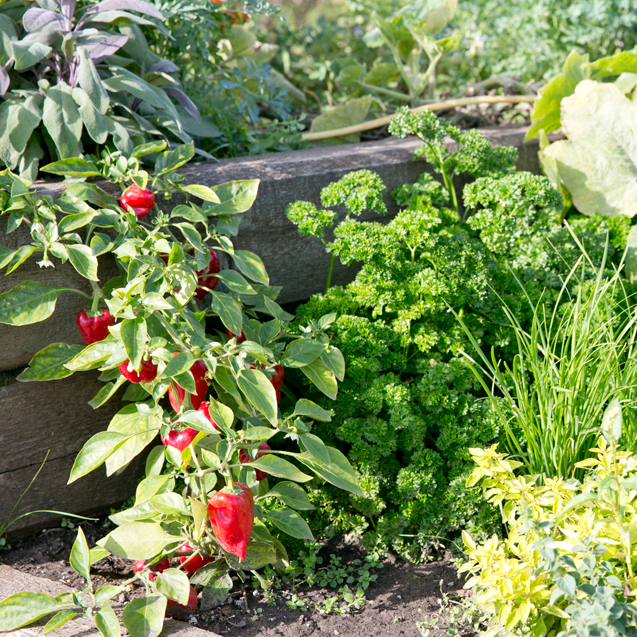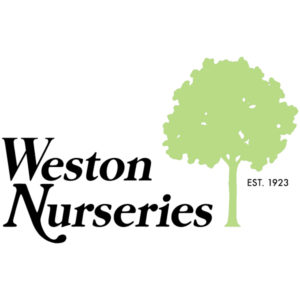Not much can beat the taste of homegrown fruit and vegetables plucked fresh from the garden – you can practically taste the sunshine in every bite! Growing your own vegetables at home can give you an immense sense of satisfaction and pride, and it minimizes the process it takes for your food to go from yard to table.
It’s time to disprove the myth that having a garden is difficult or time-consuming. Truth be told, vegetable gardening can be as easy or as difficult as you want to make it. While there’s always a new challenge out there, we have a few suggestions on how to keep it simple with a beginner garden this season.
Garden Tips to Get Started
Your garden is so much more than what you plant in it. As you start planning what veggies you want to grow this summer and where you’ll plant them, keep some points in mind.
Soil: Any plant is only as good as its roots, and most garden vegetables require rich well-drained soil. If you’re going to be planting directly into the ground (rather than a raised bed or pot), make sure that you consider the existing soil in your garden. If your soil is dusty and lacking in nutrients, add some compost or organic fertilizers to feed your vegetables all season. For soils that are heavy in clay, consider mixing in peat moss to provide better drainage.
Rotation planting: Different veggies in your garden use different nutrients from the soil and sometimes suffer from their own seasonal pests. Even the simplest or smallest gardens can benefit from changing up where you plant each season.
Companion planting: Companion planting gets your garden to work for you. If you plan your garden well, you can use the benefits of some plants to help others. Sun-loving and leafy plants can be used to provide shade for plants that need more shelter, or you can add flowers alongside your veggies to attract pollinators and beneficial insects to your garden. When you mix and match the kinds of plants you put together, your garden becomes more beautiful, diverse, and healthy. Plant smarter with plants that help each other grow, save yourself some work, and get a tastier harvest!
Harvesting: Picking & harvesting your vegetables is always a balance. You’ll want to let your crop become nearly ripe out in the garden, but not too far gone. Some vegetables, like leafy greens or carrots, are delightfully tasty when still under-ripe, while others might not be ready to eat until they are nearly mature. Waiting too long can also change the flavor of your food or encourage your plants to produce less.
Beginner Garden Favorites
Many vegetable garden classics are popular for good reason. Some of our favorite garden vegetables are simple to grow and very forgiving.
Salad Greens
Salad greens are some of the easiest and most rewarding vegetables to grow. You can easily sprout leafy greens from the seed, and their shallow roots help them thrive in any size garden – even in containers or on windowsills.
Start by finding a mix of seed that you like. There are many options available that provide a sampling of a few types of greens. Sow the seeds straight into your garden in a semi-shady spot. While morning sun is best for tender greens, you can always use other sun-loving plants to shelter these leafy vegetables. You’ll have the best-tasting greens if you keep them consistently moist, and they will enjoy a nitrogen-heavy fertilizer for the best leaf growth.
When it’s time to harvest, clip most of the plant but leave an inch or two above the soil, which can encourage a second or sometimes a third harvest from the same seed. We call that “cut and come again”. If you want leafy greens fresh from the garden all summer, sow a pinch of new seeds every 2-3 weeks for constant harvests.
Beans
Beans are not only easy to grow, but they pack an impressive nutritional punch and even help to replenish your soil. This is a great crop to plant if you are gardening with children.
Your first choice with beans is between bush or climbing beans. Climbing beans will need support from a trellis to grow, while bush beans can grow unsupported. To plant, space seeds 3 inches or more apart from each other, and poke them into the soil with the eye facing down, if possible. Your beans will germinate easily, but could benefit from being soaked overnight before planting for a quicker start. Given some good sunlight, these veggies will grow very quickly and can be enjoyed straight from the plant while immature, or cooked at maturity.
Tomatoes
For first time tomato growers, or those that want to keep their garden simple, the best choice is smaller or mid-sized fruits of the determinate (non-vine) variety. The smaller the fruit, the faster it will yield and sweeter it will taste. Determinant tomato plants remain compact and won’t require as much maintenance. Tomatoes can take a long time to produce fruit, so when you purchase seed packets or starter plants pay attention to the information on maturation time. Be sure to choose a plant that will produce and ripen within the growing season, before the first fall frost.
Choose a warm and sunny spot for your tomatoes since they love heat, but keep in mind that they prefer to be kept moist. You could even choose to plant your tomatoes in a container to maximize warmth.
Your tomato plant isn’t particularly picky, it’s just very hungry. Fuel its growth with all-purpose or vegetable fertilizer every week or two, and hold in moisture by adding some organic mulch across the top of the soil.
Beets and Carrots
These are the ideal low-maintenance crops for small gardens. These plants thrive in cooler temperatures and also have a very long shelf life.
These plants prefer loamy and well-drained soils in partially shady locations. You can even plant your seeds on the top of small ridges in the garden to optimize drainage. Your best choice will be to direct-sow these vegetables once your soil has warmed up from the winter. If your soil is chilly when you poke a finger a few inches in, hold off on planting for a few days or the seed may not germinate. Soaking the seeds overnight could help them germinate more reliably, too.
Consider planting an excess of carrots in your garden. That way, you’ll be able to thin your harvest as it grows – enjoy munching on young carrots while giving the rest of the crop room to mature. You’ll want your final crop to be about 3 inches apart to have the fullest roots.
Your carrots and beets are ready to harvest when the top of the root is about 1 inch in diameter (though you can always harvest early). Leave an inch of greens on the top after you pick them to extend their shelf life and maintain nutritional value.
Cucumbers
These are a classic, sun-loving garden vegetable that has a reputation for bountiful harvests. These vegetables are easy to start from seed inside, or even from a starter plant planted directly into your garden.
The best place to plant is in full sun to soak up as much heat as possible, either in your garden or in a container. They’ll want a trellis to help support them as they grow, otherwise they will sprawl out of the garden bed and across your yard. These broad-leafed plants are ideal to provide shade for vegetables in your garden that prefer the shade.
Cucumbers like to be kept moist as they grow. If you have a dry spell, you could end up with vegetables that are in odd shapes (but still taste amazing). To harvest, snip -don’t yank!- your cucumber with about an inch of stem on the vegetable so that it lasts longer. For the best tasting cukes, try to harvest them when they are just turning dark green, but before they bulge. It’s important to not allow them to them ripen on the vine, because this could stunt your harvest for the season. These are plants are famous for over-producing, but the extra harvest could make you very popular among your friends and neighbors. Start collecting recipes now!
You don’t have to have a large garden or a green thumb to benefit from growing your own tasty vegetables at home this season. Whether you’re building a full kitchen garden or keeping a pot of herbs on your or patio, choosing these simple vegetables is a good way to have an attractive garden and a tasty harvest you can be proud of year after year.








